- Read about Satpura Tiger Reserve, leopards found there and drive from Bengaluru to Satpura plus some lovely pictures.
This
is a short travelogue about a visit to Satpura Tiger Reserve. I have visited
Satpura many times (have driven from Bangalore), but this visit was
characterized by some very nice encounters with leopards. First, some
information about Satpura tiger reserve.
About Satpura Tiger Reserve
Satpura
Tiger Reserve is one of the less visited tiger reserves in Madhya Pradesh. Established
in 1981, STR covers 2133 Sq. Km (core: 1339 Sq. Km, buffer: 794 Sq. Km). It comprises
of Satpura National Park in the North and North-west, Bori wildlife sanctuary
on the South and South-west and Pachmarhi Wildlife Sanctuary on the eastern
side.
It is a unique park in the sense that apart from safari drives, pollution free activities like cycling, canoeing and trekking are allowed inside the park. The forests of the Satpura ranges are rich in biodiversity and home to 52 species of Mammals, 31 Reptiles and 300+ species of birds. Satpura’s rugged terrain and diverse ecosystem is well suited for predators such as leopards, tigers (which are difficult to sight) and wild dogs. STR is also famous for 50+ rock paintings that are 1500 to 10,000 years old.
Pachmarhi – the nearby hill station and cantonment town (which also next to the highest point of Madhya Pradesh, Dhupgarh Peak) - is open throughout the year for tourists. Madhai is the entry point for safaris inside STR. Only 30 vehicles are permitted to enter this core zone per day, including the morning and late-afternoon drives. Other ecotourism activities include elephant ride, boat ride, canoeing and trekking.
How to reach Satpura Tiger Reserve and when to visit
Best
time to visit STR is between 15 October and 30 June.
Nearest
airport is Bhopal, about 145 km away. Nearest railway station is Pipariya, 40
km away. Hoshangabad town is about 64 km away. There are quite a few places to
stay near Madhai (mid to high-end resorts) and of course in Pachmarhi, which is
about 87 km away. STR is easily accessible via road from major cities like
Nagpur, Jabalpur, Narsinghpur, Bhopal, and Betul.
The Road Trip – Bengaluru to Satpura and back
I
had driven down to Satpura National Park a few years back. A 3300 km road trip,
the route being Bangalore-Hyderabad Pench-Satpura National Park and back.
Day 1
Bangalore-Hyderabad
was a steady, uneventful cruise. After picking up a friend from Hyderabad airport,
I proceeded towards Nagpur. First night was spent in Rukhad, Pench, after
covering 1230 km in 16 hours.
Day 2
Next morning, we headed to a forest rest house in Satpura. After fiddling with Google Maps for a while, I decided to try a short cut through the Southern fringe of Satpura National Park. Perhaps a mistake. Narrow and broken roads, with 1-foot-deep potholes. Long stretches of no dirt trails. It was a hot and dusty drive, and slowed us down. But what is the use of a reliable Toyota 4WD if one can’t afford to experiment and explore a bit?
Cursing
the road, and admiring the scenery (it was literally in the middle of nowhere,
with almost zero traffic-a road less travelled), we eventually hit NH46,
linking Betul and Itarsi in MP. After heading north for 20 km, we left the
highway and took a village road, which morphed to a dirt track after a few km.
We reached the forest rest house (FRH) -located in the core area of the park involved about 30 km of trail driving. I had driven there one and a half years ago, that too in the evening, so wasn’t worried about losing our way.
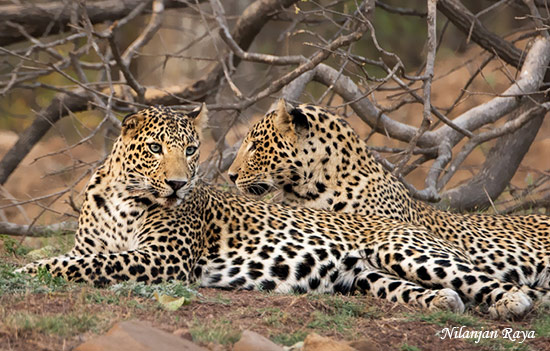 Leopard brothers – Neelu and Peelu
Leopard brothers – Neelu and Peelu
Day 3
After a quick shower and basic lunch, we went out for a self-drive safari. The 4WD system of my Fortuner needed some exercise, and it lapped up the trails happily. The forest department had relocated a couple of tigers in that zone, but we didn’t have any luck. Back to the FRH for rum and campfire.
While coming back from the safari, I had noticed a herd of feral cattle milling about the FRH. The villagers had been relocated out of the forest, but many had opted to leave their cattle behind, because they got compensation anyway. So, predators had a great time for a few months, feasting on the cattle. We were sitting outside, and knew that something was disturbing the herd – we had been hearing sounds of running and frantic bellowing. After a couple of hours, we heard the sound of heavy bodies clashing – a sudden rush and ‘thud’, and then silence. No more frantic calls. Went near the fence (the FRH was surrounded by a puny 5 feet high wire fence, not electrified), and shone the torch. We could see two bright eyes shining over the kill. I thought it was a leopard, and it would run away if I took my vehicle outside for a photo opportunity. Big mistake.
Day 4
Next
morning, when we went near the kill, we realized that it was a tiger kill. It
was a rather large cow, and the clean eating style was characteristic of a
tiger. Leopards are messy eaters (not going to describe the difference). A
tiger would have stayed there, growled, or perhaps charged at us. Sigh. What a
missed opportunity!
A
few shots from previous trips to Satpura National Park.
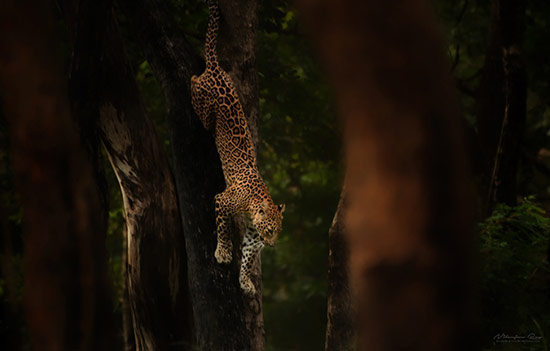 Leopard on a tree trunk.
Leopard on a tree trunk.
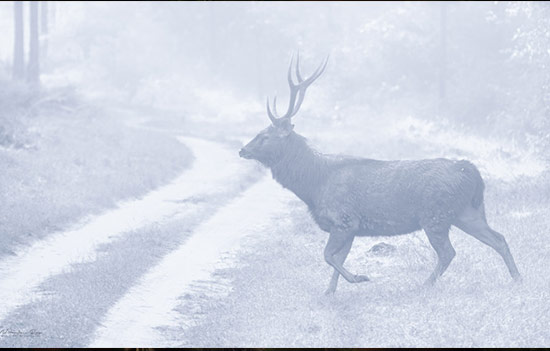 Sambar stag in the mist.
Sambar stag in the mist.
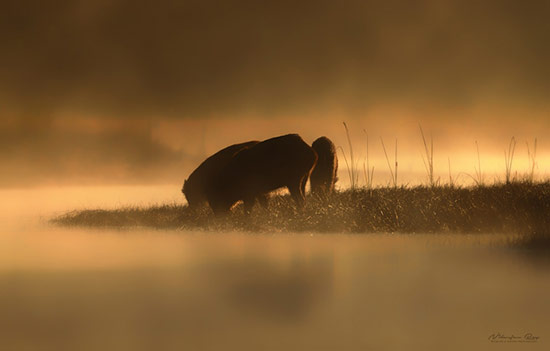 Winter drink.
Winter drink.
Nevertheless,
come nightfall, the sheer experience of forest immersion is a lot more
important than any photo. That includes tiger kills, the moon rising over the
trees, the campfire, the cool breeze (even in summer) and various sounds and
smells of the forest.
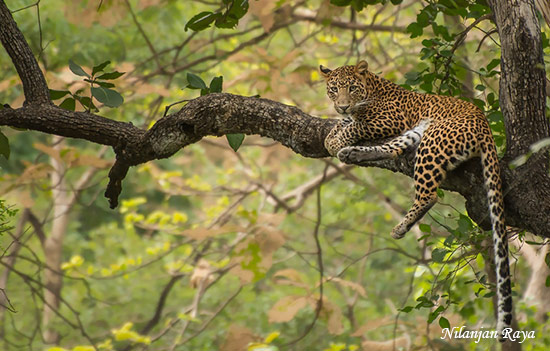
Day 5 and 6
Next
two days were spent in the forest rest house. A few hundred kms of self-driven
safaris over grassland, mud trails, rocks and dirt trails. Accompanied by
forest guides, of course. And near every camera trap, we would stop, our forest
friend would get down, take out the SD card, check battery, put the SD card
into his small (and basic) digital camera, and see what photos had been
captured. The morning after the cow kill, a pack of wild dogs came and polished
off the carcass. The tiger must have been irritated when he came back the next
night to feed.
Day 7
Then
we moved to Forsyth Lodge near Madhai for a few days, doing morning and evening
safaris. Great place, fantastic hospitality, and great naturalists. A friend used to manage the resort, now he
has moved to Bhutan. But all the naturalists were great, and I am still in touch
with some of them.
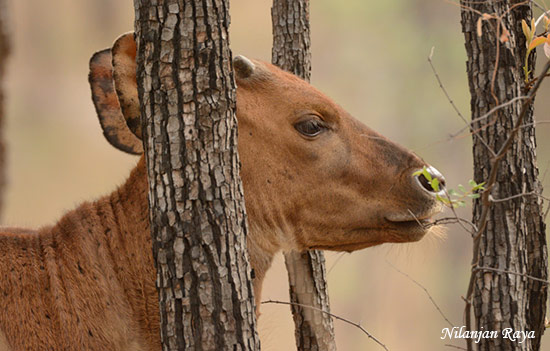 Gaur calf. Satpura is one place in India where you find light brown Gaurs.
Gaur calf. Satpura is one place in India where you find light brown Gaurs.
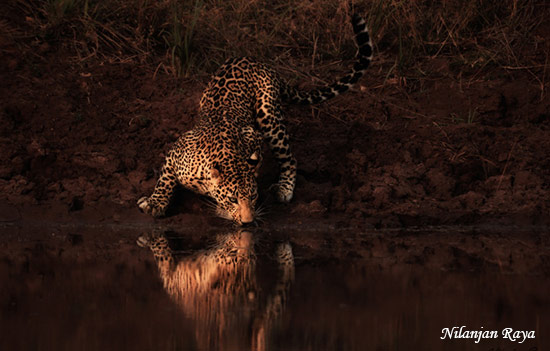 Drinking time.
Drinking time.
I had the best leopard sightings during the first and last safari. Always happens with me, someone above playing cruel tricks with expectation management. In between, we encountered a rather shy, and rather large male leopard near Churna. Was a proper peeping tom. First safari: we encountered two leopard brothers. Neelu and Peelu. Blue eyed and yellow eyed siblings. Last safari: we baked under the sun for 3 hours. Then just when we were about to turn back, we heard the warning call of a sambar. Quick about turn, rush to the area. We saw one of the brothers walking on the road. Head on, but really, really dark. We kept on reversing, to give him space. Eventually he sat down on a rock beside a waterhole, and allowed me to take a few shots at a distance of 10-12 feet, at very low shutter speeds. Some manual focus was involved, because the camera wasn’t focusing properly given the darkness.
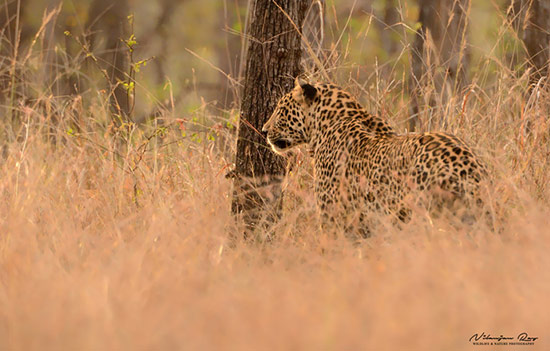 Leopards early morning.
Leopards early morning.
Day 8 Drive Satpura to Bengaluru
Next morning my friend left for Bhopal to catch a flight back to Mumbai. I had a long drive ahead of me, so decided to sleep for a while. Left after lunch. But always, always, fatigue catches up when one is returning back. Especially after a few days of safaris, where waking up at 4:30 am is involved. One can’t do the same average speed going back. Caught up with a Casca (series) audiobooks
while driving back.
Interesting character, immortal legionary, who fought in all the important wars fought in the last 2000 plus years. The author, Barry Sadler, had contempt for Hitler, but awe for friendly Chengiz. That Mongol (well, his generals) conquered more territory than anyone else in the documented history of our world. Europe would have fallen, if his generals hadn’t turned back because of the Khan’s death in Mongolia. That time, Europe was a molehill compared to Asian empires (as per a certain Corsican, whose last name was Bonaparte).
Another interesting fact. The Mongols didn’t/couldn’t conquer India, though they managed to conquer the Persian (Khwarezmid) Empire, and later overcame the Chinese (Western Xia, Jin and Song). OT: Conn Iggulden’s Conqueror Series is highly recommended.
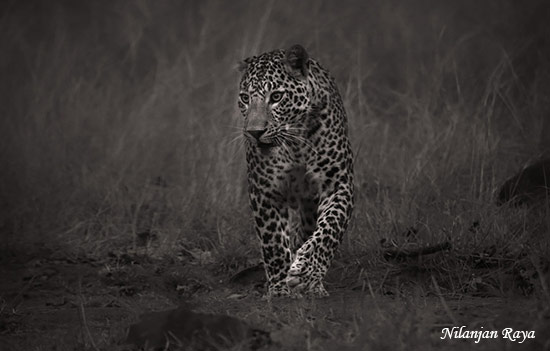 Stalking a peacock. Evening shot.
Stalking a peacock. Evening shot.
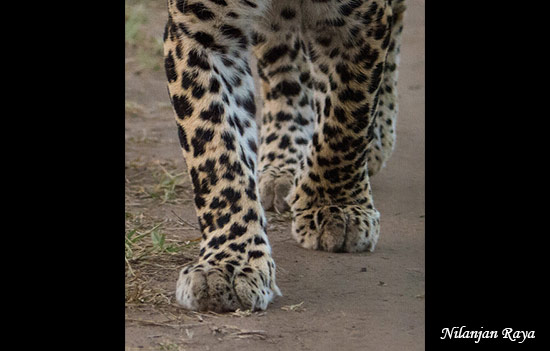 Step by step.
Step by step.
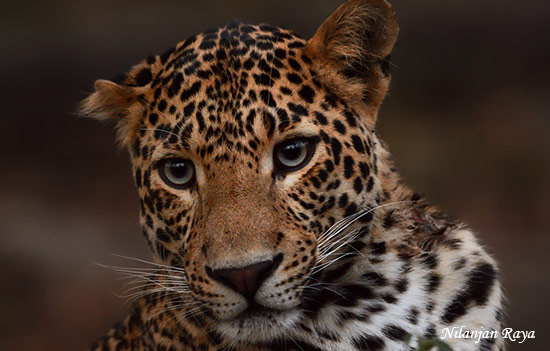 Evening shot. He has a wound on his neck. Portrait.
Evening shot. He has a wound on his neck. Portrait.
A few interesting facts about leopards
India
has 12000-25000 leopards. The latest census only surveyed part of the country,
so who knows?
Leopards
are extremely adaptable, and are often found outside cities and villages. They
even want to study in schools. VIBGYOR School in Bangalore-in the middle of the
city-had an aspirant Panthera pardus fusca student a while back.
Pound
for pound, they are one of the strongest cats.
There are man-eating leopards even today. Quote common in fact. But that’s due to habitation loss and disappearing of prey. Poor cats. If you want to read about man-eating leopards, and haven’t read Corbett (some people were living under the rock, sigh), this book, The
Man-Eating Leopard of Rudraprayag, is highly recommended) Best to read it
when alone in a forest, with leopards prowling around. No fun reading a few
pages at a time, while checking FB, Twitter, or watching TV.
Anyway, Uttarakhand, Junnar etc. are the prime hotspots for leopard-human conflict. Mumbai can also proudly raise a hand, and come in the top 20, perhaps. Just Google “maneater + leopard + India”. You would be surprised to see articles from the same week or month. We seldom get to know, staying in our safe cities.
Author Nilanjan is a Gurugram and Bengaluru based wildlife photographer and traveller.